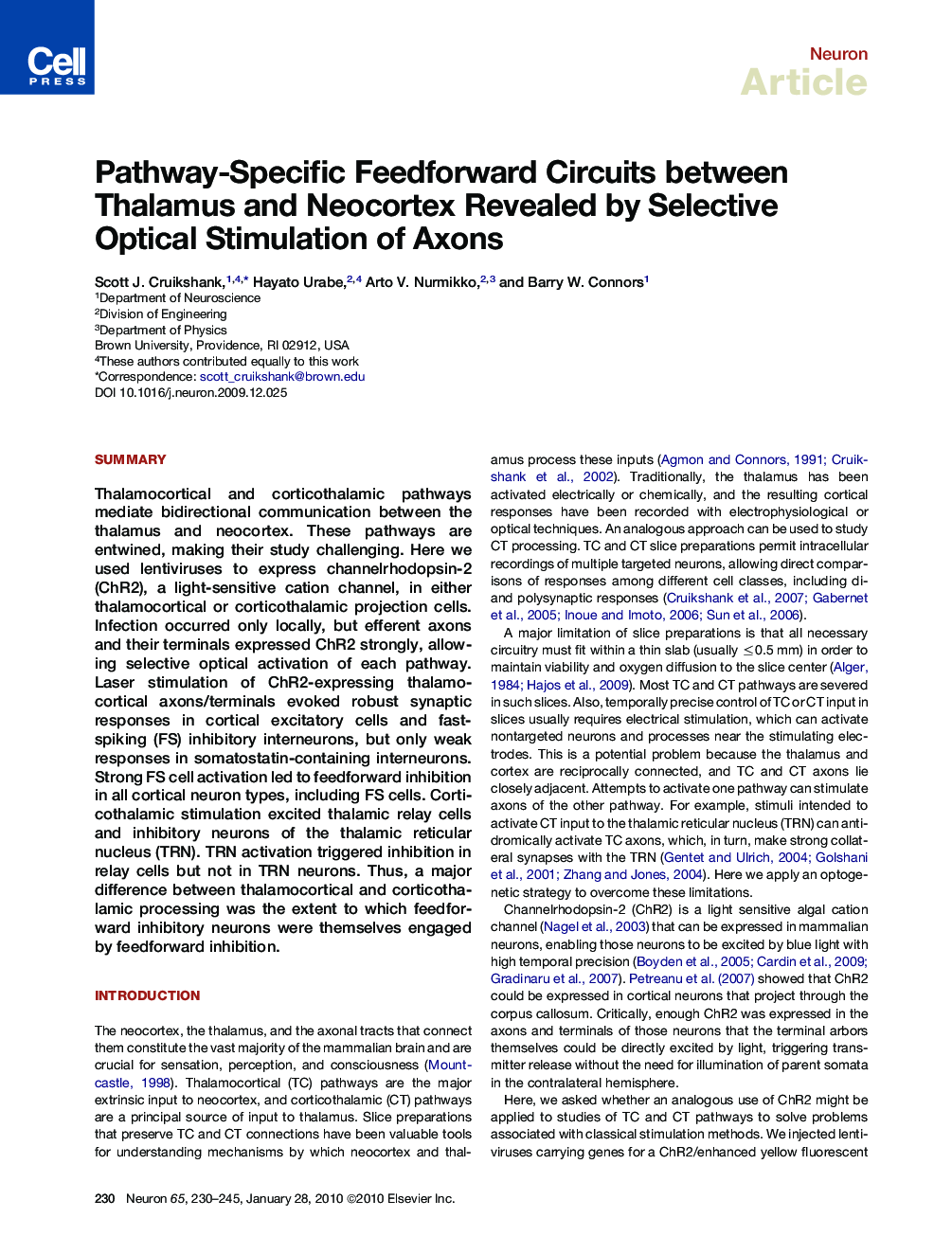| Article ID | Journal | Published Year | Pages | File Type |
|---|---|---|---|---|
| 4321612 | Neuron | 2010 | 16 Pages |
SummaryThalamocortical and corticothalamic pathways mediate bidirectional communication between the thalamus and neocortex. These pathways are entwined, making their study challenging. Here we used lentiviruses to express channelrhodopsin-2 (ChR2), a light-sensitive cation channel, in either thalamocortical or corticothalamic projection cells. Infection occurred only locally, but efferent axons and their terminals expressed ChR2 strongly, allowing selective optical activation of each pathway. Laser stimulation of ChR2-expressing thalamocortical axons/terminals evoked robust synaptic responses in cortical excitatory cells and fast-spiking (FS) inhibitory interneurons, but only weak responses in somatostatin-containing interneurons. Strong FS cell activation led to feedforward inhibition in all cortical neuron types, including FS cells. Corticothalamic stimulation excited thalamic relay cells and inhibitory neurons of the thalamic reticular nucleus (TRN). TRN activation triggered inhibition in relay cells but not in TRN neurons. Thus, a major difference between thalamocortical and corticothalamic processing was the extent to which feedforward inhibitory neurons were themselves engaged by feedforward inhibition.
► Pathways interconnecting thalamus and neocortex were selectively activated with light ► Excitatory cells in cortex and thalamus received excitation and feedforward inhibition ► Feedforward inhibition of inhibitory cells was strong in cortex but absent in thalamus ► Optical stimulation revealed distinct principles of thalamo-cortico-thalamic circuits
